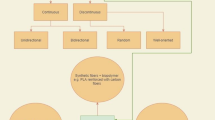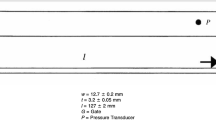Abstract
Support vector regression (SVR) combined with particle swarm optimization (PSO) for its parameter optimization, was proposed to establish a model to predict the thermal conductivity of polymer-based composites under different mass fractions of fillers (mass fraction of polyethylene (PE) and mass fraction of polystyrene (PS)). The prediction performance of SVR was compared with those of other two theoretical models of spherical packing and flake packing. The result demonstrated that the estimated errors by leave-one-out cross validation (LOOCV) test of SVR models, such as mean absolute error (MAE) and mean absolute percentage error (MAPE), all are smaller than those achieved by the two theoretical models via applying identical samples. It is revealed that the generalization ability of SVR model is superior to those of the two theoretical models. This study suggests that SVR can be used as a powerful approach to foresee the thermal property of polymer-based composites under different mass fractions of polyethylene and polystyrene fillers.
Similar content being viewed by others
References
Misri S, Leman Z, Sapuan S M, et al. Mechanical properties and fabrication of small boat using woven glass/sugar palm fibres reinforced unsaturated polyester hybrid composite. IOP Conf Ser Mater Sci Eng, 2010, 11: 012015–012027
Lu P J, Wang Y L, Sun Z G, et al. Polymer-based composites with high dielectric constant and low dielectric loss. Prog Chem, 2010, 22: 1619–1625
Gloria A, De Santis R, Ambrosio L. Polymer-based composite scaffolds for tissue engineering. J Appl Biomater Biomech, 2010, 8: 57–67
Babrekar H A, Kulkarni N V, Jog J P, et al. Influence of filler size and morphology in controlling the thermal emissivity of aluminium/polymer composites for space applications. Mater Sci Eng B, 2010, 168: 40–44
Lee E S, Lee S M, Shanefield D J, et al. Enhanced thermal conductivity of polymer matrix composite via high solids loading of aluminum nitride in epoxy resin. J Am Ceram Soc, 2008, 91: 1169–1174
Abbasi F, Shojaei A, Katbab A A. Thermal interaction between polymer-based composite friction materials and counterfaces. J Appl Polym Sci, 2001, 81: 364–369
Lee G W, Park M, Kim J, et al. Enhanced thermal conductivity of polymer composites filled with hybrid filler. Compos Part A-Appl Sci Manuf, 2006, 37: 727–734
Cheng W L, Zhang R M, Xie K, et al. Heat conduction enhanced shape-stabilized paraffin/HDPE composite PCMs by graphite addition: Preparation and thermal properties. Sol Energy Mater Sol Cells, 2010, 94: 1636–1642
Sanada K, Tada Y, Shindo Y. Thermal conductivity of polymer composites with close-packed structure of nano and micro fillers. Compos Part A-Appl Sci Manuf, 2009, 40: 724–730
Alexandre M, Dubois P. Polymer-layered silicate nanocomposites: preparation, properties and uses of a new class of materials. Mater Sci Eng Rep, 2000, 28: 1–63
Li T L, Hsu S L C. Enhanced thermal conductivity of polyimide films via a hybrid of micro- and nano-sized boron ntride. J Phys Chem B, 2010, 114: 6825–6829
Lee B, Dai G. Influence of interfacial modification on the thermal conductivity of polymer composites. J Mater Sci, 2009, 44: 4848–4855
Yue C, Zhang Y, Hu Z L, et al. Modeling of the effective thermal conductivity of composite materials with FEM based on resistor networks approach. Microsyst Technol Micro Nanosyst Inf Storage Process Syst, 2010, 16: 633–639
Liu J, Yang R G. Tuning the thermal conductivity of polymers with mechanical strains. Phys Rev B, 2010, 81: 174122
Lin W, Zhang R W, Wong C P. Modeling of thermal conductivity of graphite nanosheet composites. J Electron Mater, 2010, 39: 268–272
Park Y K, Kim J G, Lee J K. Prediction of thermal conductivity of composites with spherical microballoons. Mater Trans, 2008, 49: 2781–2785
Agari Y, Ueda A, Nagai S. Thermal conductivity of polyethylene/ polystyrene blends containing SEBS block copolymer. J Appl Polym Sci, 1992, 45: 1957–1965
He H, Fu R L, Han Y H, et al. Thermal conductivity of ceramic particle filled polymer composites and theoretical predictions. J Mater Sci, 2007, 42: 6749–6754
Nielsen L E. The thermal and electrical conductivity of two-phase systems. Ind Eng Chem Fundam, 1974, 13: 17–20
Ganapathy D, Singh K, Phelan P E. An effective unit cell approach to compute the thermal conductivity of composites with cylindrical particles. J Heat Transfer, 2005, 127: 553–559
Nagai Y, Lai G C. Thermal conductivity of epoxy resin filled with particulate aluminum nitride powder. J Ceram Soc Jpn, 1997, 105: 197–200
Dong Q W, Liu L L, Liu M S. Advancement of the prediction methods of effective thermal conductivity of polymer-based composites (in Chinese). J Mater Eng, 2009, (3): 78–81
Zeng Q F, Li J Y, Peng X D. Prediction model of thermal properties of polymer-based composites (in Chinese). Lubr Eng, 2006, 4: 70–75
Vapnik V. The natural of statistical learning theory. New York: Springer, 1995
Wen Y F, Cai C Z, Liu X H, et al. Corrosion rate prediction of 3C steel under different seawater environment by using support vector regression. Corros Sci, 2009, 51: 349–355
Cai C Z, Zhu X J, Wen Y F, et al. Predicting the superconducting transition temperature Tc of BiPbSrCaCuOF superconductors by using support vector regression. J Supercond Nov Magn, 2010, 23: 737–740
Cai C Z, Wen Y F, Pei J F, et al. Support vector regression prediction of porosity of porous NiTi alloy by self-propagation high-temperature synthesis. Rare Met Mater Eng, 2010, 39: 1719–1722
Cai C Z, Wang W L, Sun L Z, et al. Protein function classification via support vector machine approach. Math Biosci, 2003, 185: 111–122
Cai C Z, Han L Y, Ji Z L, et al. SVM-Prot: Web based support vector machine software for functional classification of a protein from its primary sequence. Nucleic Acids Res, 2003, 31: 3692–3697
Yang Z, Gu X S, Liang X Y, et al. Genetic algorithm-least squares support vector regression based predicting and optimizing model on carbon fiber composite integrated conductivity. Mater Design, 2010, 31: 1042–1049
Wang C H, Zhong Z P, Li R, et al. Prediction of jet penetration depth based on least square support vector machine. Powder Technol, 2010, 203: 404–411
Cai C Z, Wang G L, Wen Y F, et al. Superconducting transition temperature Tc estimation for superconductors of the doped MgB2 system using topological index via support vector regression. J Supercond Nov Magn, 2010, 23: 745–748
Kennedy J, Eberhart R. Particle swarm optimization. Proc IEEE Int Conf Neural Networks, 1995, 4: 1942–1948
Author information
Authors and Affiliations
Corresponding author
Rights and permissions
About this article
Cite this article
Wang, G., Cai, C., Pei, J. et al. Prediction of thermal conductivity of polymer-based composites by using support vector regression. Sci. China Phys. Mech. Astron. 54, 878–883 (2011). https://doi.org/10.1007/s11433-011-4319-8
Received:
Accepted:
Published:
Issue Date:
DOI: https://doi.org/10.1007/s11433-011-4319-8




